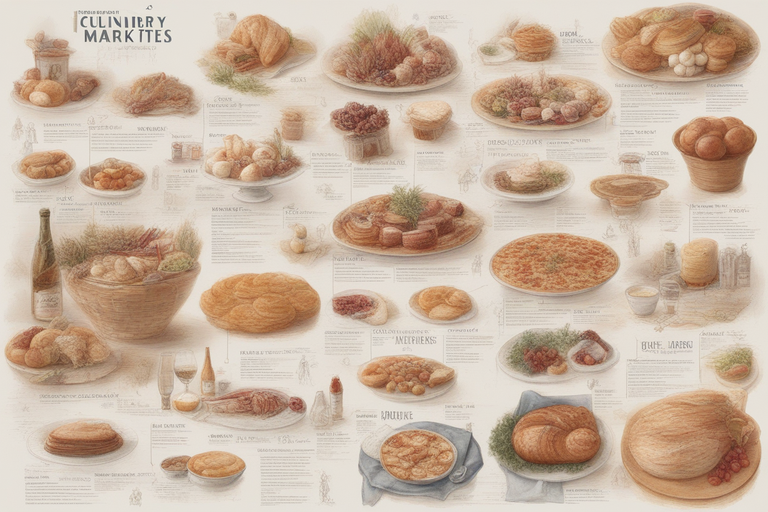Embarking on a culinary adventure in France? Get ready to savor The Best Tips on How to Eat in France. This guide unravels the flavors of French cuisine, from Parisian cafe culture to countryside markets, offering an insider’s peek into the art of enjoying French food. Explore the rich tapestry of regional gastronomy and uncover the secrets to navigating menus, making your dining experience in France a delight for the taste buds.
Table of Contents
French Culinary Delights: A Gastronomic Journey
France, renowned as the culinary capital of the world, boasts a rich tapestry of flavors that have tantalized taste buds for centuries. Exploring the French culinary scene is a journey into a world where each dish tells a story and each bite is a celebration of tradition.

Baguette: The Iconic French Bread
Commence your culinary adventure with the iconic baguette. This long, thin loaf with a crisp crust and soft interior is a staple on every French table. Whether paired with cheese, dipped in soups, or enjoyed on its own, the baguette embodies the essence of French baking.
Escargot: A Delicacy for the Adventurous
For the more adventurous palate, escargot is a culinary delight that captures the essence of French gastronomy. These delectable snails, often prepared with garlic, parsley, and butter, offer a unique taste experience that has become synonymous with French haute cuisine.
Ratatouille: A Vegetable Symphony
Vegetarians and veggie enthusiasts will revel in the flavors of ratatouille. This Provençal stewed vegetable medley is a celebration of the region’s produce, combining tomatoes, eggplant, zucchini, bell peppers, and aromatic herbs for a delightful and colorful dish.
Coq au Vin: Rustic Elegance on a Plate
Coq au Vin, a classic French dish, showcases the country’s love affair with poultry. This rustic yet elegant dish features chicken slow-cooked in red wine, mushrooms, onions, and herbs, resulting in tender, flavorful meat that practically melts in your mouth.
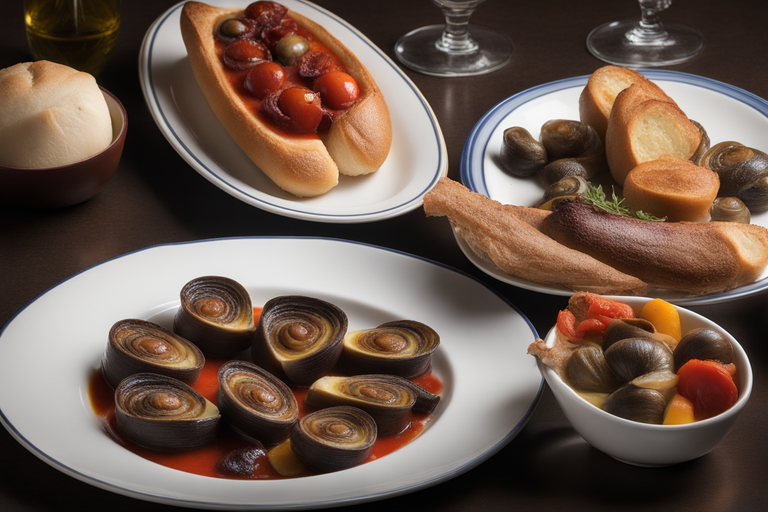
Fromage: A Journey through French Cheeses
No exploration of French culinary delights is complete without a foray into the world of fromage. With over 1,000 varieties, each region boasts its own specialties, ranging from the creamy Brie to the pungent Roquefort. Pair with a baguette, and you have a quintessentially French experience.
Macarons: A Sweet Finale
Conclude your culinary journey on a sweet note with macarons. These delicate almond meringue cookies, sandwiched together with creamy fillings, offer a symphony of flavors and colors. From pistachio to raspberry, each bite is a testament to French pastry craftsmanship.

Café Culture: French Social Tradition
In France, the café isn’t just a place for a caffeine fix; it’s a way of life. Embedded in the country’s cultural identity, the café embodies a social experience, a rendezvous of conversations, and an extension of daily life.
The Traditional Parisian Café
The Parisian café, with its iconic chairs lining the sidewalks, is the quintessential image of French café culture. People-watching, engaging in debates, or simply savoring a coffee is a daily ritual that locals and tourists alike partake in.

Art of People Watching
Cafés in France are social hubs where individuals engage in the art of ‘flâner,’ a term describing the act of leisurely strolling and observing life. The café setting is the perfect stage for this activity, inviting individuals to sit, observe, and appreciate the happenings around them.
Café Gourmand: A Gastronomic Affair
Cafés offer not only coffee but also a range of delectable treats. A Café Gourmand, a common offering in many establishments, presents a selection of mini desserts accompanied by an espresso. This delightful combination allows patrons to enjoy various sweet bites alongside their coffee.
Philosophy of Leisure
Cafés in France embody a philosophy of leisure, providing a space for unhurried conversations, intellectual discussions, and social interactions. They’re a cornerstone of French life, welcoming patrons to take their time and enjoy the moment.

Fine Dining in France: An Epicurean Tradition
Gastronomy Capital of the World
France is renowned globally for its culinary expertise. The fine dining establishments in the country aren’t just restaurants; they’re institutions that exhibit the pinnacle of culinary excellence. French fine dining represents the perfect blend of tradition, innovation, and refined taste.
Artful Presentation
Dishes in these establishments are meticulously crafted and presented. From the arrangement of ingredients to the choice of tableware, the emphasis is on aesthetics, turning meals into visual masterpieces.
Michelin-Starred Gastronomy
The world-famous Michelin Guide, originating in France, rates and awards stars to restaurants based on their quality. These stars are a mark of exceptional culinary achievement and service. Exploring Michelin-starred restaurants is a gastronomic journey in itself.
Signature French Cuisine
Fine dining in France proudly showcases traditional French cuisine. From exquisite sauces and reduction techniques to the use of rich, high-quality ingredients, each dish is a celebration of flavor.
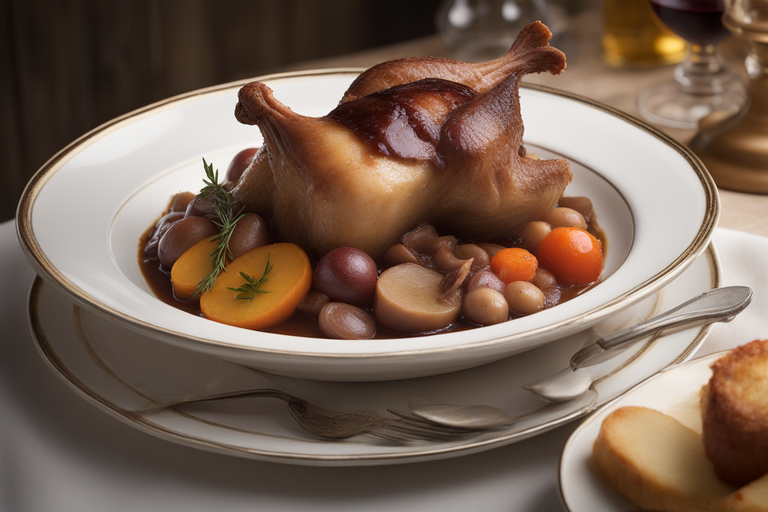
Street Food and Markets in France: A Glimpse of Culinary Diversity
Exploring French Street Food
While France is renowned for its fine dining, its street food scene is equally delightful. From crepes and croissants to fresh baguettes, street-side vendors offer delicious and accessible options for both locals and tourists.
Market Marvels
French markets are a treasure trove of fresh produce, cheeses, wines, and other local delights. Exploring these markets is a sensory experience, filled with vibrant colors, enticing aromas, and the authentic flavors of France.

Regional Delicacies
Each region in France boasts unique culinary identities reflected in their street food and markets. For instance, the South might offer Socca, a chickpea pancake, while Northern regions celebrate with Carbonnade Flamande, a beer-based beef stew.
Unmissable Street Food
Popular street food items include the classic crepes, savory and sweet galettes, delicious baguette sandwiches, and frites. These items are not only affordable but also represent the quintessential flavors of France.

Wine Tasting and Pairing: Understanding French Elegance
French Wine: A Cultural Emblem
France is synonymous with exquisite wine, boasting a diverse selection that’s celebrated globally. Vineyards across the country produce reds, whites, and rosés, each region reflecting its unique terroir, climate, and grape varieties.
Tasting French Wines
Visiting wineries or enrolling in wine tasting sessions presents an opportunity to savor and understand French wines. From Bordeaux’s bold reds to Burgundy’s elegant Pinot Noir, exploring different varieties offers an in-depth understanding of the French wine culture.

Art of Wine Pairing
Understanding wine pairing is a quintessential part of French dining. From the robust flavors of Bordeaux wines perfectly complementing red meat to the delicacy of Chardonnay or Sauvignon Blanc paired with seafood, the French emphasize the ideal coupling of food and wine.

Exploring France Through Gastronomy
France’s Culinary Regions
France is a tapestry of diverse culinary traditions. Exploring regions like Normandy, Provence, Alsace, and the Loire Valley offers a treasure trove of unique dishes. Including photos of iconic dishes from each region can help readers visualize the tour.
Guided Gastronomic Tours
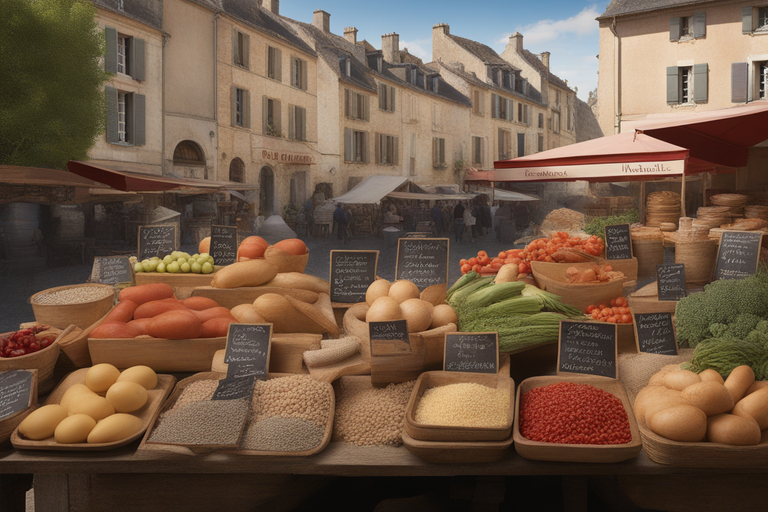
Discuss organized tours that explore regional cuisines, from guided wine tours in Bordeaux to cheese tastings in Auvergne. Incorporate images of these tours, showcasing local chefs and guides imparting their wisdom to participants.
Famous Culinary Festivals and Markets
Highlight regional food festivals like the Lyon Street Food Festival or the Nice Carnival with vibrant images of bustling markets, local produce, and the assortment of delicacies on display.

Decoding French Menus
Traditional Dish Terminology
Navigating French menus can be a little tricky due to regional variations and a few linguistic challenges. Explaining common terms like ‘ratatouille’ or ‘coq au vin’ could be beneficial. Pairing explanations with images of the dishes would greatly assist in understanding.
Understanding Course Structure
The traditional French menu typically follows a sequence – entrée (starter), plat principal (main course), fromage (cheese), and dessert. Explaining this structure visually could involve displaying a typical menu with these sections highlighted.

Local Specialties and Ingredients
Discuss local specialties like cassoulet, bouillabaisse, and dishes that use escargot or foie gras. Describing these dishes alongside photos of their ingredients or chefs preparing the meals could be helpful.
Descriptions and Translations
Help readers understand the menu with a guide for deciphering descriptions. For example, translating ‘boudin noir’ to ‘blood sausage’ or ‘tarte aux pommes’ to ‘apple tart.’ Including translated menus or images of translations could be quite helpful.

Regional Gastronomy: Beyond Paris
Provence, Normandy, and Beyond
France’s gastronomic delights aren’t limited to Paris. Different regions offer distinct cuisines. Provence, known for its ratatouille, bouillabaisse, and herbes de Provence, delivers a unique flavor. Pictures of Provencal markets or traditional meals would be perfect here.
Normandy is renowned for its rich dairy, producing creamy Camembert and Brie. Photos of pastoral landscapes or a cheese platter would complement this description well.
Alsace, Burgundy, and the South
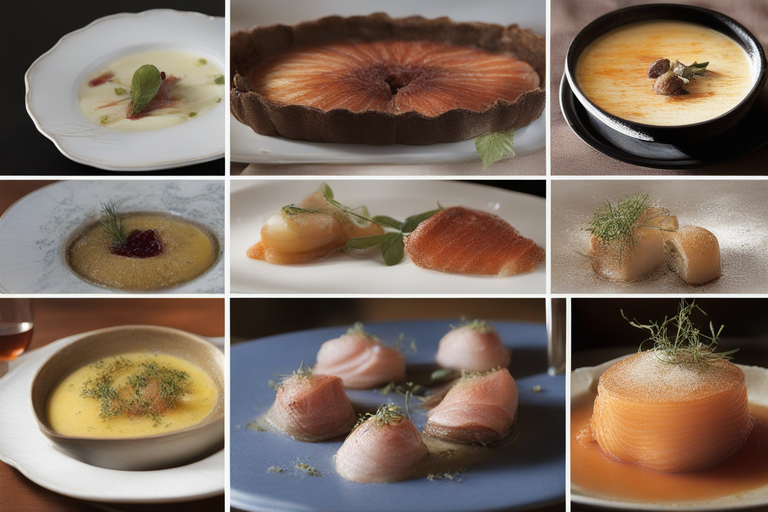
Alsace provides the best of German and French cuisine. Dishes like sauerkraut and flammekueche showcase this blend. Including images of these dishes or local eateries would be ideal.
Burgundy’s boeuf bourguignon and coq au vin are culinary highlights. An image of a traditional Burgundian meal would greatly add to the visual appeal.
The south offers culinary gems like cassoulet and salade niçoise. Pictures of these dishes or the streets of Nice would greatly complement this section.
Scenic Culinary Tours
Each region is famous not only for its food but also its picturesque locales. Adding images of local scenery or food markets would bring these places to life for the readers.

In Conclusion
the journey through French cuisine is a cultural adventure that extends far beyond the romantic streets of Paris. Exploring the diverse culinary landscapes across France unveils a treasure trove of tastes, textures, and traditions.
Each region tells a unique culinary story, offering signature dishes, distinctive ingredients, and breathtaking scenery that promise an unforgettable gastronomic experience. The array of flavors and delicacies waiting in every corner offers a rich tapestry of food culture that’s worth discovering.
From the rustic simplicity of Provence to the rich, creamy cheese of Normandy, the fusion cuisine in Alsace, the hearty meals of Burgundy, and the sun-kissed delights in the South, the culinary adventure in France is nothing short of magical.
It’s a journey through history, tradition, and local flavors. So, whether you savor a buttery croissant at a Parisian café or explore the vineyards of Bordeaux, each bite and sip offer a unique tale of France’s rich heritage, ready to be experienced and enjoyed. Discover and relish the many flavors and moments France has to offer beyond the City of Light.
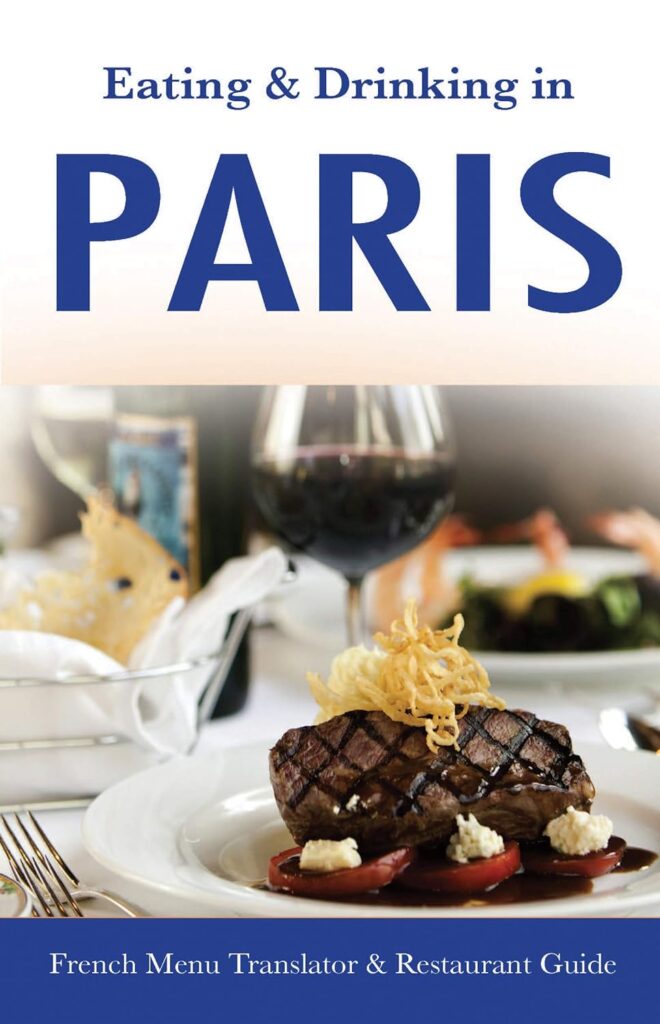
Related Blogs:
Best and Useful French Travel Phrases Used by Native Speakers
Learn French – 30+ Best Resources and Advice to Learn French At Home


